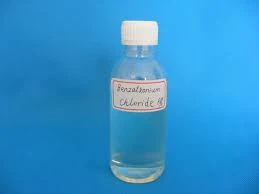polyhydroxycarboxylic acid
Polyhydroxy Carboxylic Acids Structure, Properties, and Applications
Polyhydroxy carboxylic acids (PHCAs) are a diverse group of organic compounds characterized by multiple hydroxyl (-OH) and carboxyl (-COOH) functional groups. These compounds play a significant role in various fields, including biochemistry, medicine, and industrial chemistry. Understanding their structure, properties, and applications can provide insights into their importance and utility.
Structure and Classification
The primary feature that distinguishes polyhydroxy carboxylic acids is the presence of more than one hydroxyl and carboxylic group. They can be structurally classified into several categories based on the number and arrangement of these functional groups. Common examples include citric acid, tartaric acid, and gluconic acid. The presence of multiple functional groups in a single molecule influences their chemical behavior and solubility in water, making them valuable for various applications.
Properties
The dual functional groups in polyhydroxy carboxylic acids impart unique physicochemical properties.
1. Solubility PHCAs are generally soluble in water due to their ability to form hydrogen bonds with water molecules. This property makes them suitable for use in aqueous solutions, enhancing their applicability in biological systems and as intermediates in chemical syntheses.
2. Acidity The presence of carboxylic groups contributes to the acidic nature of these compounds. Their pKa values typically indicate that they can donate protons in solution, which is crucial for many biochemical processes and industrial applications.
3. Reactivity Polyhydroxy carboxylic acids can participate in various chemical reactions, including esterification, amidation, and reduction, due to the presence of both carboxyl and hydroxyl groups. This reactivity is exploited in the synthesis of more complex organic molecules.
polyhydroxycarboxylic acid

Applications
The diverse properties of polyhydroxy carboxylic acids have facilitated their widespread use in various applications
1. Biochemical Significance In biology, PHCAs play critical roles as intermediates in metabolic pathways. For instance, citric acid is a key player in the Krebs cycle, which is vital for energy production in aerobic organisms. Their involvement in biological processes is a significant area of study for biochemists and pharmacologists.
2. Food and Beverage Industry Many PHCAs are natural compounds found in fruits and vegetables. Citric acid is commonly used as a preservative and flavoring agent in food products, while tartaric acid is crucial for the winemaking process. Their ability to regulate pH and enhance flavors makes them invaluable in food processing.
3. Pharmaceutical Applications Polyhydroxy carboxylic acids have potential applications in the pharmaceutical industry, not only as active pharmaceutical ingredients but also as excipients. For example, gluconic acid and its salts are used in drug formulations as stabilizers and solubilizers. Their biocompatibility and nontoxic nature make them suitable for pharmaceutical applications.
4. Industrial Applications In the manufacturing sector, PHCAs are used as chelating agents, especially in metal ion extraction and removal processes. Their ability to form stable complexes with metal ions has made them essential in various industrial applications, including detergents and cleaning agents.
5. Cosmetics and Personal Care In the cosmetics industry, polyhydroxy carboxylic acids are incorporated into formulations for their moisturizing properties. They help to enhance skin hydration and improve overall skin texture, making them popular ingredients in creams and lotions.
Conclusion
Polyhydroxy carboxylic acids are versatile compounds with significant implications across various fields. Their unique structure and properties allow them to function effectively in biochemical processes, food preservation, pharmaceutical formulations, and industrial applications. As research continues to uncover new uses and properties of these compounds, their importance in science and industry is likely to grow, showcasing the remarkable potential of polyhydroxy carboxylic acids. Understanding these compounds can lead to innovative solutions in multiple domains, further highlighting their value in modern science.
-
Understanding Polycarboxylic Acids: Properties, Applications, and Future PotentialNewsJul.28,2025
-
Scale Inhibitor Explained: How to Protect Your System from Limescale and Hard Water DamageNewsJul.28,2025
-
Scale and Corrosion Inhibitors: Essential Chemicals for Industrial Water System ProtectionNewsJul.28,2025
-
Polyaspartic Acid: A Biodegradable Polymer for Sustainable ChemistryNewsJul.28,2025
-
Isothiazolinones: A Versatile Antimicrobial Class with Industrial Power and Regulatory ChallengesNewsJul.28,2025
-
A Deep Dive into 2-Phosphonobutane-1,2,4-Tricarboxylic Acid (PBTC)NewsJul.28,2025





